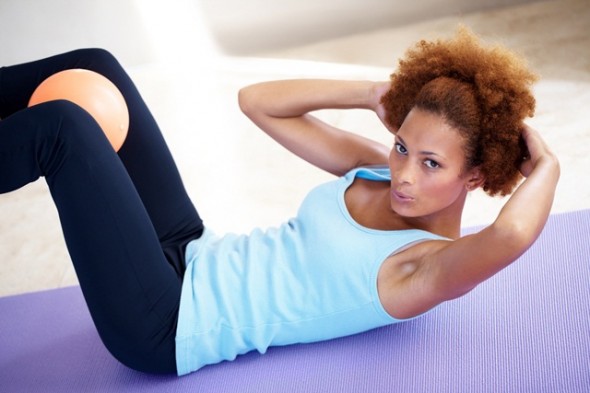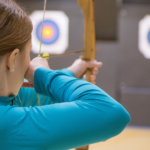Have you noticed that your balance is slipping with age? Sometimes when I make a lateral move, like side-stepping to avoid something, I go off balance and swerve a bit. I definitely look tipsy and feel embarrassed!
Our ability to balance peaks at around age 20 and normally remains excellent through our early to mid-40s, after which it begins a subtle process of deterioration. It happens so slowly that it is almost imperceptible, but the fact is that the neurotransmitters that coordinate balance deteriorate with age.
The good news is that balance improves with training, both with strength training and with specific balance training. The first gains in a strength training program are neuromuscular, creating a new integration between the brain and the body. As you learn proper form to coordinate the movements, the signals to the brain create growth, first in the pathways to the brain and then to the muscles and joints directly.
The neuromuscular stimulus results in quicker reaction time, the ability to recover from a stumble or to change direction. Our balance centers – eyes, ears and feet – work together to sense imbalance and correct the course. As the muscles get stronger, especially in the lower body, we become more stable and more able to prevent a fall or an injury.
Specific balance training is also very effective. If you are just starting to work on balance, try this simple stork stance to determine which leg is more stable. Stand on one leg, fixing your eyes on something in front of you. Engage your core muscles by drawing your belly button in toward your spine. When you can hold the position for 30 seconds, try closing your eyes (or one eye) to increase the level of difficulty. When you switch legs, note the difference between the two sides, which can be quite dramatic.
Next, add movement for dynamic balance, such as doing a “tight-rope” walk on the floor. Walk heel-to-toe in a straight line. Again, it helps to keep your eyes focused on something in front of you instead of looking down since the eyes are one of your balance centers. Maintain proper alignment, holding your torso upright, chest lifted, eyes straight ahead.
The next challenge to your equilibrium moves you from a stable surface, the floor, to an unstable one such as a stability ball. You can sit, lie, or place your feet on top of the ball to create instability. Just sitting on it requires continual adjustments: the ball activates the muscles of your feet, legs, hips, and spine in order to maintain your balance. Some schools in Europe have replaced chairs with balls in classrooms to improve posture and activity levels in children. I use one myself for a desk chair.
Your balance will definitely improve with practice. Do strength training exercises to enhance your mind-body connection and to build stability in the large muscles of the legs. Then do specific exercises to challenge your balance and create symmetry between the two sides of your body. You’ll reduce your risk of falling and prevent a possible injury.
About Author: Joan Pagano is the author of best-selling fitness books, an informational speaker on health and fitness topics, and the owner of Joan Pagano Fitness in New York City. For over 20 years, she and her staff have provided professional guidance and support to people at all levels of fitness, creating hundreds of training programs for individuals, groups, fitness facilities, schools, hospitals and corporations. Joan is an authority on the benefits of exercise for women’s health issues such as pregnancy, breast cancer, menopause and osteoporosis as well as strength training through the decades. She has contributed to such publications as SHAPE, Health, Fitness, Oxygen and Vitality magazines, The Wall Street Journal, The Chicago Tribune and The Cleveland Plain Dealer among many others and has made national and regional TV appearances.
Website: http://www.joanpaganofitness.com
Facebook: http://www.facebook.com/JoanPaganoFitness
Twitter: https://twitter.com/#!/JPaganoFitness

Sylvia Browder is CEO of Specialty Home Services LLC, a Home Improvement Company; a Small Business Consultant at Browder Consulting Group, a startup consultancy firm to help women with startup assistance, marketing, website and graphic design work and other support services. In addition, she has co-authored several published books; publisher of ‘Sylvia Browder’s Blog for Women Entrepreneurs’ a lifestyle blog; and publisher of ShopSpendBlack.com Business Directory & Blog platform created to help consumers find black owned businesses in a searchable format. In her spare time, she enjoys spending time with her husband of 30 years; 5 adult children and 5 grandchildren; church; friends and motorcycle riding.


















Admiring the time and energy you put into your site and in depth information you provide.
It’s good to come across a blog every once in a while that isn’t the same old rehashed material. Excellent read! I’ve bookmarked your site and I’m including your RSS feeds to my Google account.
Hello there,
Thanks so much for your kind words. You are so right, its a big commitment to keep the blog relevant and fresh. I appreciate your support.
Sylvia